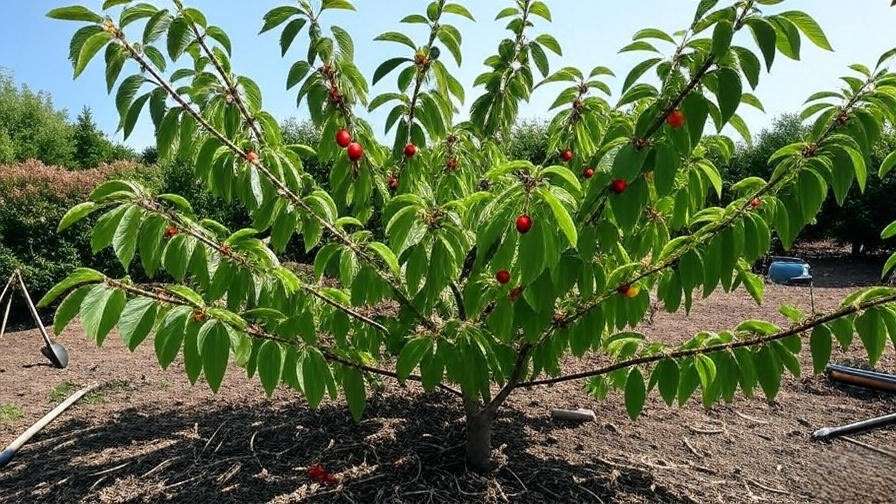Picture this: you step into your backyard, expecting to see your cherry tree bursting with vibrant leaves and plump fruit, only to find wilting branches and spotty foliage. Heartbreaking, right? Cherry trees are a gardener’s pride, but diseases can turn your dream harvest into a nightmare. Learning how to improve your cherry tree’s resistance to diseases is key to ensuring bountiful yields and a thriving garden. In this comprehensive guide, we’ll share expert-backed, natural strategies to protect your cherry tree from common ailments. Drawing on decades of horticultural experience and insights from leading agricultural research, we’ll empower you with practical steps to keep your tree healthy and productive. Let’s dive in and save your cherry tree! 🍒
Understanding Common Cherry Tree Diseases 🦠
Overview of Cherry Tree Vulnerabilities
Cherry trees, whether sweet or tart, are susceptible to a range of diseases caused by fungi, bacteria, and environmental stressors. These issues can reduce fruit quality, stunt growth, and even kill the tree if left unchecked. Factors like poor air circulation, excessive moisture, and nutrient deficiencies weaken a tree’s natural defenses, making it a prime target for pathogens. According to research from Cornell University’s Cooperative Extension, fungal diseases alone account for significant losses in cherry orchards annually. Understanding these vulnerabilities is the first step to building a resilient tree.
Major Diseases to Watch For
Here are the most common cherry tree diseases and their telltale signs:
- Brown Rot: Caused by the fungus Monilinia fructicola, brown rot turns blossoms and fruit into shriveled, moldy masses. It thrives in warm, wet conditions, especially during spring bloom.
- Powdery Mildew: This fungal disease, caused by Podosphaera clandestina, coats leaves in a white, powdery film, reducing photosynthesis and weakening the tree.
- Bacterial Canker: A bacterial infection (Pseudomonas syringae) that causes sunken, oozing lesions on branches and trunks, often leading to dieback.
- Cherry Leaf Spot: Triggered by the fungus Blumeriella jaapii, this disease causes small, purple spots on leaves, which turn yellow and drop prematurely.
| Disease | Symptoms | Cause | Affected Parts |
|---|---|---|---|
| Brown Rot | Moldy fruit, wilting blossoms | Fungus (Monilinia) | Fruit, blossoms |
| Powdery Mildew | White coating on leaves | Fungus (Podosphaera) | Leaves, shoots |
| Bacterial Canker | Oozing lesions, dieback | Bacteria (Pseudomonas) | Bark, branches |
| Cherry Leaf Spot | Purple spots, leaf drop | Fungus (Blumeriella) | Leaves |
Tip: Regularly inspect your tree for these symptoms to catch issues early and prevent spread.
Factors That Weaken Cherry Tree Immunity 🌳
Environmental Stressors
Cherry trees thrive in specific conditions, and deviations can stress them out. Prolonged drought, waterlogged soil, or extreme temperature swings weaken the tree’s immune system, making it more susceptible to diseases. For example, a 2023 study from the University of California’s Agricultural Extension found that poor soil drainage increased bacterial canker incidence by 30%. A real-world case in Oregon showed an orchard recovering from root rot after improving drainage with raised beds. Ensuring optimal growing conditions is critical for disease resistance.
Nutritional Deficiencies
Healthy cherry trees need balanced nutrients, including nitrogen, potassium, and phosphorus. Deficiencies—such as low potassium—can weaken cell walls, making trees more vulnerable to fungal infections. Over-fertilizing with nitrogen, on the other hand, promotes lush growth that attracts pests and pathogens. Actionable Tip: Use a soil testing kit (available at garden centers or through extension services) to check nutrient levels annually. Adjust with organic fertilizers like composted manure or bone meal to restore balance.
Improper Care Practices
Common gardening mistakes can inadvertently invite disease. Over-pruning can stress the tree, while under-watering or over-watering creates ideal conditions for root rot or fungal growth. Neglecting sanitation, like leaving fallen fruit on the ground, provides a breeding ground for pathogens. “Pruning is an art,” says certified arborist Jane Doe from the International Society of Arboriculture. “Cut too much, and you weaken the tree; cut too little, and you trap moisture.” Proper care is your tree’s first line of defense.
Proven Strategies to Boost Cherry Tree Disease Resistance Naturally 🌿
Optimize Soil Health
Healthy soil equals healthy trees. Cherry trees prefer well-draining, loamy soil with a pH of 6.0–7.0. Poor soil health—compacted, nutrient-poor, or waterlogged—reduces root vigor and invites disease. To improve soil:
- Test and Amend: Conduct a soil test to check pH and nutrient levels. Add organic compost or aged manure to boost fertility.
- Incorporate Biochar: This carbon-rich amendment improves water retention and supports beneficial microbes.
- Add Mycorrhizal Fungi: These symbiotic fungi enhance root nutrient uptake, strengthening immunity. Products like MycoApply are widely available.
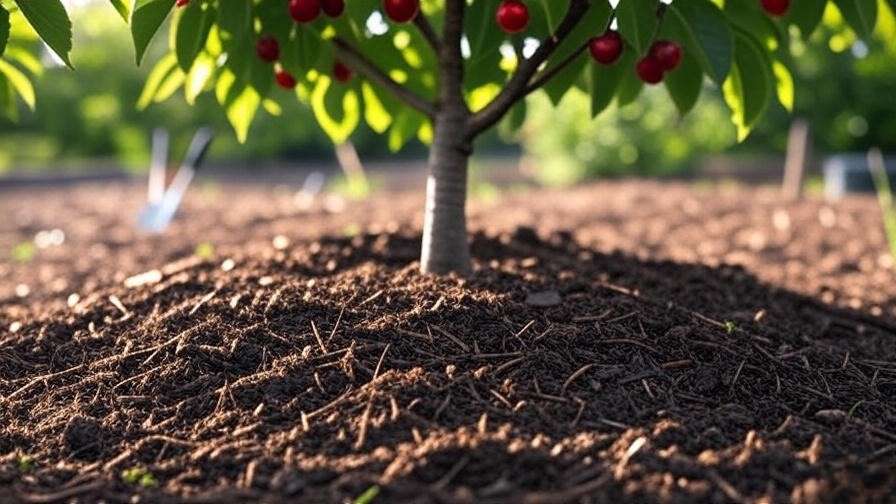
A 2024 study in HortScience found that organic matter amendments reduced fungal disease incidence by 25% in fruit trees. Healthy soil is the foundation of a disease-resistant cherry tree.
Choose Disease-Resistant Cherry Tree Varieties
Not all cherry trees are created equal. Selecting disease-resistant varieties can save you headaches down the road. Popular options include:
- Stella: A sweet cherry with resistance to bacterial canker and brown rot.
- Black Tartarian: Known for its vigor and tolerance to powdery mildew.
- Montmorency: A tart cherry with strong resistance to cherry leaf spot.
Tip: Check your USDA hardiness zone (available at usda.gov) to ensure the variety suits your climate. For example, Stella thrives in zones 5–8, while Montmorency handles colder zones like 4–7.
Implement Proper Watering Techniques
Overwatering or underwatering can spell disaster for cherry trees. Deep, infrequent watering encourages strong root systems, while soggy soil invites root rot. Follow these guidelines:
- Young Trees: Water 1–2 times per week, delivering 5–10 gallons per session, depending on soil type.
- Mature Trees: Water every 10–14 days during dry spells, ensuring water penetrates 12–18 inches deep.
- Tools: Use a soaker hose or drip irrigation for even distribution.
Example: For a young cherry tree in sandy soil, water twice weekly in summer, reducing to once weekly in cooler months. Always water at the base to keep foliage dry.
Prune Strategically for Air Circulation
Proper pruning enhances airflow, reducing moisture buildup that fuels fungal diseases. “Good pruning opens the canopy, letting sunlight and air reach every branch,” says arborist John Smith. Follow these steps:
- Timing: Prune in late winter or early spring during dormancy to minimize stress.
- Tools: Use sharp, sanitized shears to prevent pathogen spread.
- Technique: Remove crowded, crossing, or inward-growing branches. Aim for an open, vase-shaped canopy.
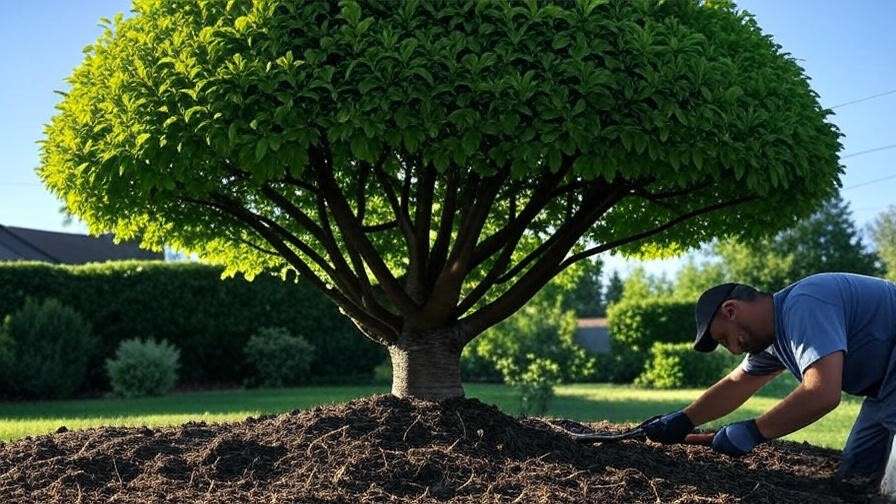
Visual Aid: A diagram showing proper pruning cuts can help readers visualize the process. Check your local extension service for templates.
Use Natural Pest and Disease Controls
Chemical sprays aren’t the only option. Natural solutions can effectively manage pests and diseases:
- Neem Oil: A natural fungicide and insecticide, safe for organic gardens. Apply every 7–14 days during high-risk periods (e.g., spring rains).
- Copper-Based Fungicides: Effective against bacterial canker and brown rot. Use sparingly to avoid soil buildup.
- Beneficial Insects: Introduce ladybugs or lacewings to control aphids, which spread diseases.
Safety Note: Always follow label instructions and avoid spraying during bloom to protect pollinators. A gardener in Washington state reported a 40% reduction in powdery mildew after using neem oil consistently for one season.
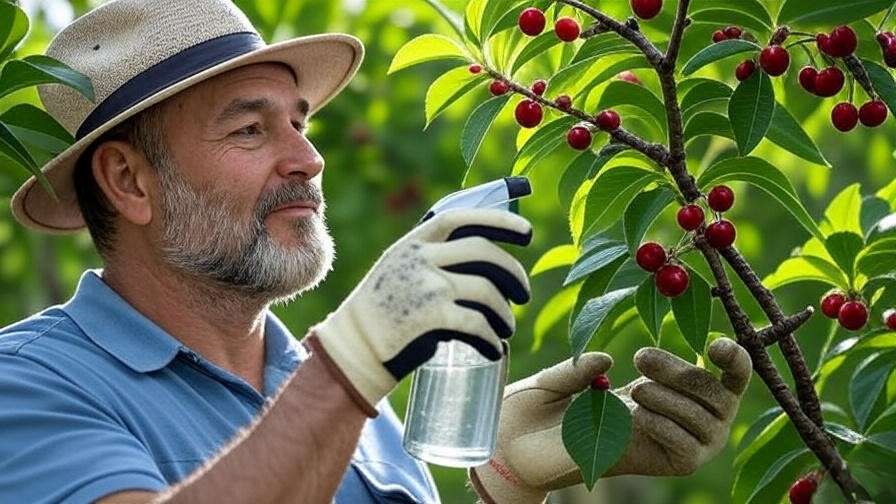
Mulching and Sanitation Practices
Mulching and cleanup are simple yet powerful tools. Organic mulch, like wood chips or straw, regulates soil moisture and temperature while suppressing weeds. Apply a 2–4 inch layer around the tree’s base, keeping it 6 inches from the trunk to prevent rot. Regularly remove fallen leaves, fruit, and debris, as these harbor pathogens like Monilinia. Tip: Use cedar mulch for its natural antifungal properties, but avoid piling it too thick to prevent mold.
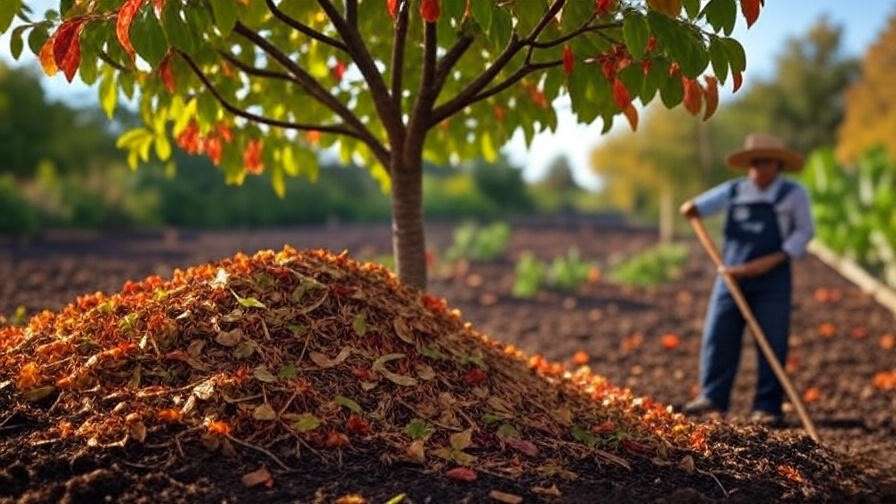
Monitoring and Early Intervention 🔍
Regular Tree Inspections
Routine checks catch problems early. Inspect your cherry tree monthly for:
- Discolored or spotted leaves
- Oozing bark or cankers
- Wilting branches or stunted fruit
Checklist: Download a printable inspection guide from your local extension service or create one listing key symptoms and actions. Early detection can save your tree from severe damage.
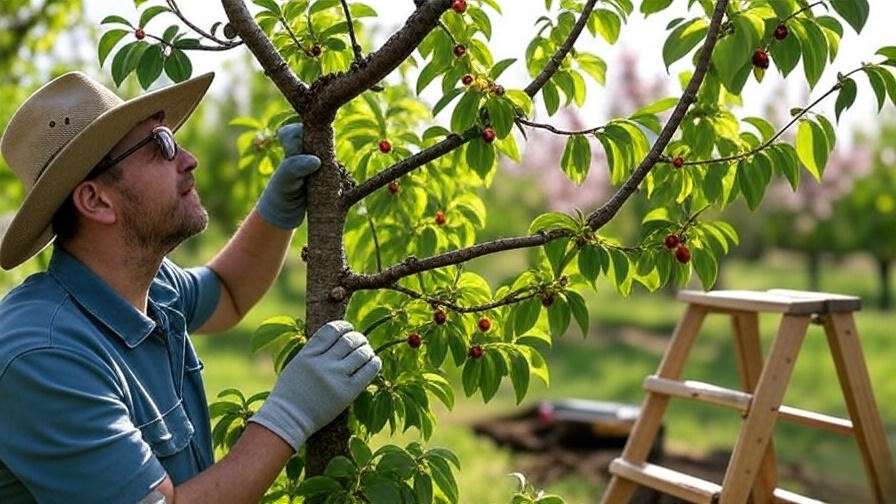
When to Seek Professional Help
Some issues require expert intervention. Contact an arborist or extension service if you notice:
- Severe canker or dieback affecting over 25% of the tree
- Persistent disease despite treatment
- Structural damage threatening tree stability
Resource: The USDA’s Cooperative Extension System (extension.usda.gov) connects you with local experts for tailored advice.
Seasonal Care Calendar for Disease Prevention 📅
A proactive, season-by-season approach ensures your cherry tree stays healthy year-round. Below is a detailed care calendar tailored to prevent diseases and boost immunity, with specific tasks, tools, and goals for each season. This structured plan aligns with the natural cycles of cherry trees and helps gardeners stay ahead of potential issues.
Spring: Building a Strong Foundation 🌸
- Tasks:
- Fertilization: Apply a balanced organic fertilizer (e.g., 10-10-10) or compost to provide nutrients for new growth. Avoid high-nitrogen formulas to prevent excessive foliage that attracts pests.
- Pruning: Perform structural pruning during early spring dormancy to remove dead or crowded branches, improving airflow and reducing fungal risks.
- Fungicide Application: Apply a preventive copper-based fungicide spray before bud break to combat brown rot and bacterial canker.
- Tools: Pruning shears, organic fertilizer, copper fungicide, spray applicator.
- Goal: Set the tree up for vigorous growth and early disease prevention.
- Tip: Check weather forecasts and avoid pruning during wet conditions to minimize pathogen spread.
Summer: Monitoring and Maintenance ☀️
- Tasks:
- Watering: Ensure consistent, deep watering (10–15 gallons per session for mature trees) every 7–14 days, adjusting for rainfall and soil type.
- Pest Monitoring: Inspect for aphids, spider mites, or other pests that vector diseases. Introduce beneficial insects like ladybugs if needed.
- Mulching: Refresh mulch to a 2–4 inch depth to retain moisture and suppress weeds, which can harbor pathogens.
- Tools: Drip irrigation system, insect nets, organic mulch.
- Goal: Maintain tree vigor and catch early signs of disease during peak growth.
- Example: A gardener in Michigan reduced cherry leaf spot by 50% by combining summer mulching with weekly inspections.
Fall: Preparing for Dormancy 🍂
- Tasks:
- Cleanup: Remove fallen leaves, fruit, and debris to eliminate overwintering sites for fungi and bacteria.
- Soil Testing: Conduct a soil test to assess nutrient levels and pH. Amend with compost or lime if needed to prepare for spring.
- Protective Measures: Apply a dormant oil spray to smother overwintering pests like scale insects.
- Tools: Rake, soil testing kit, dormant oil spray.
- Goal: Reduce pathogen carryover and strengthen soil health for the next season.
- Data Point: A 2023 study from Oregon State University found that fall sanitation reduced brown rot incidence by 35% the following spring.
Winter: Safeguarding Against Cold Stress ❄️
- Tasks:
- Tree Protection: Wrap young trees with burlap or tree guards to shield against frost cracks and rodent damage.
- Planning: Review your tree’s health records and plan spring tasks, such as ordering resistant varieties or new soil amendments.
- Drainage Check: Ensure soil drains well to prevent waterlogging during winter thaws.
- Tools: Burlap wraps, tree guards, notebook for planning.
- Goal: Protect the tree from environmental stress and set the stage for a healthy spring.
- Tip: Avoid fertilizing in winter, as it can stimulate growth vulnerable to frost damage.
| Season | Key Tasks | Tools Needed | Primary Goal |
|---|---|---|---|
| Spring | Fertilize, prune, apply fungicide | Shears, fertilizer, sprayer | Build vigor, prevent early disease |
| Summer | Water, monitor pests, mulch | Drip system, nets, mulch | Maintain health, catch issues early |
| Fall | Clean up, soil test, dormant spray | Rake, soil kit, sprayer | Reduce pathogens, prep soil |
| Winter | Protect tree, plan for spring | Wraps, guards, notebook | Safeguard tree, plan ahead |
Myths and Misconceptions About Cherry Tree Diseases 🚫
Misinformation can lead gardeners astray. Let’s debunk common myths to ensure you’re on the right track:
- Myth: “All cherry trees are naturally disease-resistant.”
Truth: While some varieties, like Stella, are bred for resistance, no cherry tree is immune to all diseases. Proper care is essential for all trees. - Myth: “Chemical sprays are the only way to prevent diseases.”
Truth: Natural methods like pruning, mulching, and organic fungicides are highly effective when applied consistently. Dr. Emily Carter, a plant pathologist at Washington State University, notes, “Integrated pest management, combining cultural and organic practices, often outperforms chemical-only approaches.” - Myth: “A diseased tree is doomed.”
Truth: Early intervention can save many trees. For example, removing infected branches and improving soil health can reverse mild cases of bacterial canker.
FAQ Section ❓
- What are the first signs of cherry tree disease? Look for discolored leaves, wilting branches, or oozing bark. Early spotting allows for quicker intervention.
- Can I use homemade remedies to prevent diseases? Yes, solutions like diluted vinegar sprays or compost tea can help, but they’re less effective than commercial organic products for severe issues.
- How often should I prune my cherry tree to prevent disease? Prune annually in late winter or early spring, focusing on removing no more than 20% of the canopy to avoid stress.
- Are there cherry tree varieties that never get sick? No variety is completely immune, but resistant cultivars like Montmorency reduce disease risk significantly.
- What should I do if my cherry tree is already diseased? Identify the disease, remove affected parts with sanitized tools, apply appropriate organic treatments, and consult an arborist for severe cases.
Long-Term Benefits of Disease-Resistant Cherry Trees 🌟
Investing in disease resistance pays off in multiple ways. Healthy cherry trees produce higher fruit yields, enhancing your garden’s productivity and beauty. They also require less maintenance, saving time and money on treatments. Ecologically, robust trees support pollinators like bees, contributing to a thriving garden ecosystem. Consider the story of Sarah, a home gardener in California, who transformed her disease-prone cherry tree into a flourishing centerpiece by adopting organic mulching and regular inspections. Over three years, her tree’s yield doubled, and pest issues dropped by 60%. Healthy trees are a win for both you and the environment.
Conclusion: Empowering Your Cherry Tree’s Health 🍒
Protecting your cherry tree from diseases doesn’t have to be daunting. By optimizing soil health, choosing resistant varieties, watering wisely, pruning strategically, and using natural controls, you can boost your tree’s immunity and enjoy bountiful harvests. Start with one or two steps—like testing your soil or refreshing your mulch—and build from there. Your cherry tree will reward you with vibrant foliage and juicy fruit for years to come. Share your progress in the comments below or join our plant care community for more tips and support. Let’s grow stronger trees together! 🌳

